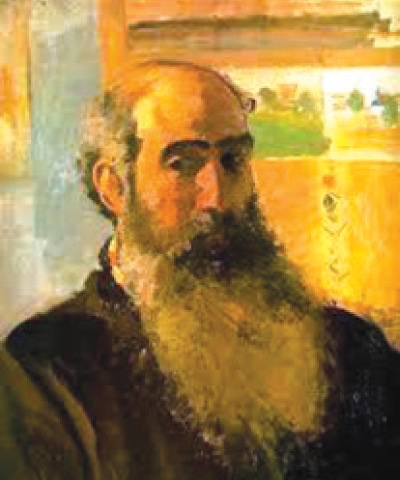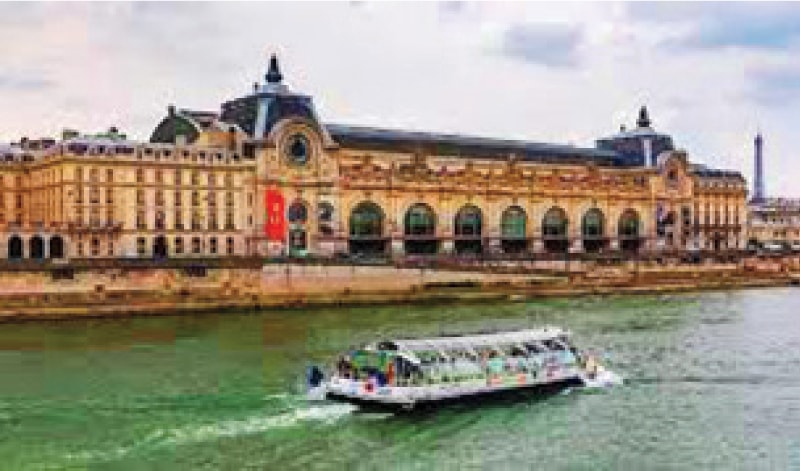
Exhibitions may remain at standstill on account of the pandemic restrictions, but that has hardly stopped the art world from being in the midst of a harsh and relentless legal battle over a Neo-Impressionist masterpiece, currently housed in the Musée d’Orsay.
But before we move any further, a few lines about the history of Orsay Museum will not be out of place or even uninteresting!
It used to be a railway station, built at the end of the 19th century. Considering the fact that their creation would face the Louvre Palace just across the River Seine, the architects put all their imagination and talents into raising a rival and sumptuous historical monument.
But facts of life often turn such dreams upside down and that is what happened when, just after the Second World War — and with the extension of the Paris metro line — the Orsay Station became altogether inoperable and remained a deserted place for more than two decades.
A fierce battle over a famed Pissarro painting inflames the art world
An interesting episode of this story is that when Orson Welles visited Orsay Station in 1961. He was inspired by the majesty of the totally abandoned building and decided to shoot his film The Trial entirely within its walls. He later qualified the movie as his greatest creation.
By the early 1970s, the authorities decided to entirely demolish Orsay Station. But the then French President Valery Giscard d’Estaing (who died only two months ago, at the age of 94) opposed the idea and chose to turn the building into a museum.

Today the Musée d’Orsay is reputed for the largest collection of Impressionist and post-Impressionist masterpieces, with magnificent works by Monet, Manet, Degas, Renoir, Pissarro, Cézanne, Seurat, Sisley, Gauguin and Van Gogh, among so many others, on permanent display, and is considered to be one of the largest museums in the world, which some five million art enthusiasts visiting every year.
To come back to our story, we can focus on an event that took place before the Second World War, when the rich Parisian businessman Raoul Meyer bought an oil work, ‘Shepherdess Bringing In The Sheep’, painted by Camille Pissarro in 1886, and placed it in his well-reputed supermarket called Galleries Lafayette, which still exists today.
During the German occupation of Paris in 1941, the canvas, like so many other legendary works of art, disappeared mysteriously. After years of quest, Meyer was finally able to find it in 1951 in a private art shop in Switzerland but was unsuccessful in recuperating it, as it was quickly sold to an unnamed buyer.
Another half a century would pass, and then Madame Leone-Noel Meyer, the adapted daughter of Raoul Meyer and the inheritor of his fortune — today 81 years old — would discover the Pissarro chef d’oeuvre in the collection of Oklahoma University in the US.
Questioned, the university officials would simply say that it was a gift from a businessman whose son was a student there. Following a tough legal battle that lasted many years, judges would finally decide that the French lady was as much an owner of the painting as the university itself, and that it should pass hands between the two proprietors every three years.
Madame Leone-Noel Meyer told a reporter: “When the canvas arrived at the Musée d’Orsay, the organisers placed it on a stand and left me alone with it. I knelt down before it and wept … and wept!”

She further says: “As far as I am concerned, it is not just a painting. I feel like a shepherdess myself who should hold the door open so that all the sheep, the stolen masterpieces of French artists, could return home.”
We earlier talked about the Orson Welles film shot in the Orsay Station. Readers who are movie fans will certainly remember another one, The Train (1964), in which Burt Lancaster plays a French Resistance fighter who succeeds in deflecting an entire train, led by a Nazi general and loaded with hundreds of paintings and sculptures, heading across the border to Germany.
Meanwhile, Madame Meyer’s advocate is basing his argument on the French Ordinance of 1945, which makes it legal to bring back all the artworks robbed by the Nazis, from whichever country that possesses them today. On the other hand, a group of American lawyers is insisting that not only the painting should return to the US, but that Madame Meyer should pay a fine of 2,500 US dollars per day for the delay.
The French court will render its judgment on June 2 this year.
The writer is an art critic based in Paris.
Published in Dawn, EOS, April 4th, 2021















































Dear visitor, the comments section is undergoing an overhaul and will return soon.